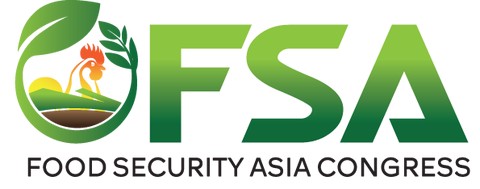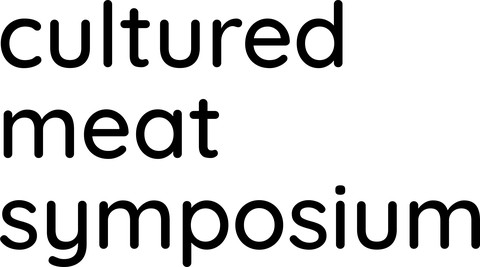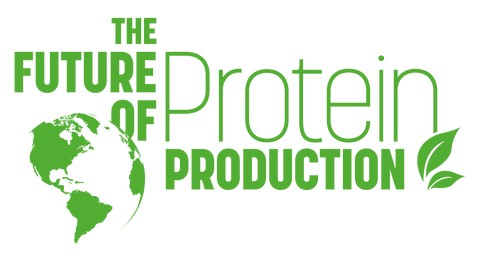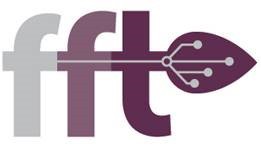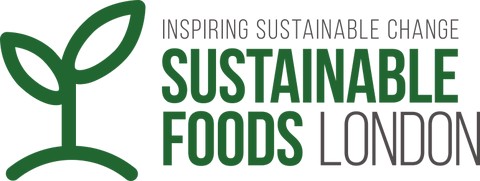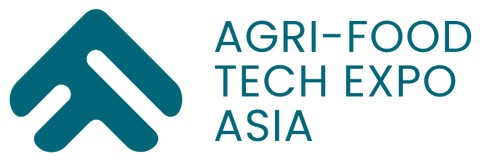The Shojinmeat Project Inside Story
September 7, 2021 - 16 min read

Featured
Editor’s note: Most English-language news and reporting about cellular agriculture relays a common narrative of the industry’s development, from Mark Post’s pioneering the first cell-based burger in 2013 to the first regulatory approval and cell-based meat product launch in Singapore at the end of 2020. But this is just part of the technology’s history. There’s a largely unheard story unfolding in Japan that shows a whole other realm of possibility for how an industry can be born — one in which citizen scientists grow meat at home, come together as a community, and ultimately play a key role in policy-making processes that unlock public funding, generate consumer awareness, and open the door for product launches. This movement is called the Shojinmeat Project and its founder is Yuki Hanyu.
This article is the story of some of the Shojinmeat Project’s key milestones and achievements told in Hanyu’s own words. Much of its content was originally authored in Japanese but has been synthesized into English in a collaborative process with Protein Report editors.
Disclosure: Yuki Hanyu is Founder and CEO of IntegriCulture Inc., one of Protein Report’s sponsors, but this is not sponsored content — Protein Report has retained full editorial control and the decision to publish it was in no way influenced by IntergriCulture’s sponsorship. We believe this is a story that needs to be made accessible to global audiences.
In the past, there have been cases of scientists and entrepreneurs inspired by popular works of science fiction starting a venture to bring those futuristic visions into reality. In retrospect, I was one of them, with my sources of inspiration being anime, manga, and video games. The futures portrayed in these works, though — with things grown in fluorescent-green culture vats — ranged from dystopian to utopian. Obviously, I wanted the utopian version, so I began the Shojinmeat Project in February 2014 as an optimistic experiment.
Because of its promise as a technology that may eventually touch the life of every person on the planet, I knew there was a different way to generate public interest and further research in cellular agriculture. Rather than follow the standard path for tech innovation, I wanted to see what would happen if we started with affordable, accessible resources and an open-source approach to the technology’s development. How far could our collective creativity take us?
The Shojinmeat Project is a Japanese nonprofit serving a global community of citizen scientists interested in cellular agriculture. There is no formal definition of membership and the group is open to anyone wanting to get into this field, whether through DIY cell culture, artistic activities, hosting academic conferences, or simply sharing information and enthusiasm.
Since its founding, we have involved countless young citizen scientists and served as a pipeline for those talents to move into policy and advisory roles within the Japanese government and private sector. Our meetings have also been a starting point for a number of public- and private-sector spin offs to form and come together, making significant contributions toward a uniquely open and inclusive cellular agriculture industry in Japan.
But while I have previously been interviewed about some specific developments, only those who were there from the beginning saw the whole journey — and so I’d like to share here the story of some of the Shojinmeat Project’s key milestones and how our little experiment came to have a big impact on national policy.
Beginnings
The Shojinmeat Project was born from a casual gathering of students and graduates at an informal coworking space in Tokyo. When I pitched the idea of cell-cultured meat, Dr. Ikko, a life-science post-doc who would later become the CTO of IntegriCulture, responded with the idea of large-scale cell-culture based on commodity food materials and conditioned medium. Since the concept was testable through DIY bio outside traditional laboratory environments, we set out to explore its feasibility.
Growing the nascent Shojinmeat Project community was another matter. We needed a hook that represented our geocultural context and unique vision, while appealing to young people who tend to be more open to new ideas. Avoiding elitism, hubris, and ensuring transparency were key priorities to prevent distrust (like we had seen around GMOs) of this new food technology.
With these goals in mind, we knew environmental sustainability would not be sufficiently compelling as it lacked entertainment value. Similarly, an animal-welfare focus was too foreign and polarizing. In contrast, however, sci-fi anime, manga, and literature had already made references to cell-cultured meat in their visions of the future. And admittedly, I was (and still am) heavily immersed in “otaku” fandom — the Japanese term often used to describe young people with an obsessive interest in subjects such as computers, video games, anime, and manga.
We started by posting our DIY cell-culture procedure on Niconico, the most popular video-sharing platform among otaku in Japan, including an actual tasting of DIY homegrown meat. What was shown in the video was also converted into a fanzine to be sold at Comiket, an event similar to ComicCon in the US. These approaches were both entertaining and effective at showcasing our radically transparent approach to the cell-culturing process, while eliminating any elements of elitism from the subject.
There was definitely a young, playful counterculture spirit, among the members we attracted through these activities and a lot of our motivation was driven by a sort of rebellious, ironic humor: A high-school student growing meat at home ahead of universities or corporations? We actually did that, and it was televised nationwide in 2017. Shortly after the televised event, IntegriCulture — which was registered in 2015 as a vehicle to gain access to lab equipment for the Shojinmeat Project — spun off to go on its own startup journey.
While forging this unique path, we were also monitoring developments overseas. As early as 2015, Shojinmeat Project members were in contact with both New Harvest and the newly created Good Food Institute, sharing our approach and incorporating their work into ours. It was around this time that much of the sector’s terminology was beginning to develop — the term “cellular agriculture” was coined in New Harvest’s Facebook group, and having seen this development, a Shojinmeat Project member coined the Japanese term and created its Japanese-language Wikipedia page.
At a 2016 conference organized by Dr. Mark Post, the Maastricht University scientist who created the first cell-cultured hamburger in 2013, I made a presentation on DIY cultured meat, introducing attendees to the Shojinmeat Project, our citizen-science mission, and our unique positioning, backed neither by a corporation nor a university. Our goal was two-fold: we wanted to raise awareness about cellular agriculture as well as to nurture a working model in which anyone was empowered to contribute to the technology’s development.
Later, aided by an offer of help from a South African supporter, we launched an open-access English-language Slack channel to connect people from around the world who were interested in cellular agriculture. The connection with New Harvest also led to funding from the Shuttleworth Foundation, a philanthropic organization that supports those working on innovative solutions to social problems.
After starting small and developing our hobbyist community over several years, our work finally began to attract greater attention.
JST-Mirai Program
In the fall of 2017, a number of officials from the Japan Science and Technology Agency (JST) came to one of the Shojinmeat Project’s weekly meetings held at the FabCafe in Tokyo. One of those representatives was considering cultured meat as the subject of their next open call for “future society creation projects” (JST-Mirai), a class of JST-supported projects aimed at encouraging Japanese innovation and environmental sustainability. Buoyed by the initiative on display and the ideas being presented — including chats about DIY home kitchen experimentation and live seed cell sharing — JST officials saw promise in our work, and in cellular agriculture as a whole. At that time, Shojinmeat Project was the only source of information on cellular agriculture from perspectives specifically relevant to Japan.
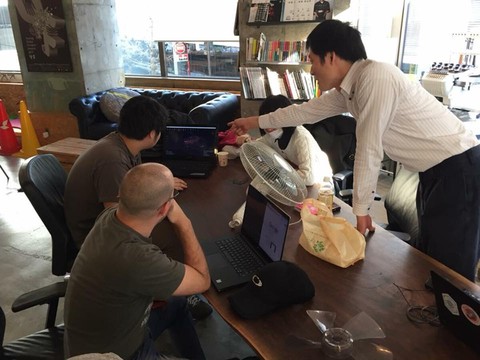
It was also during this period — as our first cohort of high school students had become energized by their DIY meat-growing experiments — that the Shojinmeat Project began reaching new audiences. We had created an anime-inspired video of a DIY cultured-meat bun for a presentation at the Niconico Chokaigi Convention (similar to Los Angeles’ Anime Expo), challenging anyone interested to make the same thing, and we were overwhelmed by the enthusiastic response.
A few months later, in May of 2018 and after several rounds of further meetings and email exchanges between JST officials and Shojinmeat Project members, the JST-Mirai Program was launched. This was an ambitious program that allocated $20 million over five years to a team of academic labs and industry players, with the goal of developing a one-centimeter-thick steak using a culture medium made from microalgae. The scale and scope were years ahead of other countries’ projects. It was the first time so much public funding had been earmarked for cultured meat research and the intention behind this generous funding was for both companies and universities to put it to practical and innovative use. In early project milestones, Nissin Foods revealed a cube of cultured meat in 2019, while Tokyo Women’s Medical University published exciting research into microalgae hydrolysate basal medium.
Although we can’t claim responsibility for the launch of the JST-Mirai Program, there were clear synchronicities between its timing, focus, and our meetings and exchanges with those JST officials. This was hugely encouraging and a sign of even greater things to come.
MAFF Food Tech Study Group
Around the same time as the launch of the JST-Mirai program, some significant developments were also brewing inside Japan’s Ministry of Agriculture, Forestry and Fisheries (MAFF).
In 2018, a group of energetic young MAFF officials formed around a mutual frustration with the ministry’s largely “reactive” approach to policy making. This group — called Team 414 — instead wanted to see MAFF leading innovation on farming, food, and sustainability issues rather than merely responding to challenges as they emerge — and the Shojinmeat Project caught their attention.
Team 414 began by publishing documents urging the government to leverage emerging food technologies and take a more forward-looking approach. Throughout that year, they also organized several meetings that brought together key stakeholders to explore possible strategies. Shojinmeat Project members enthusiastically participated in those meetings, and, looking back at photos from that time, I can see one of our members with a copy of the Pure Meat Book — the self-published zine containing a DIY cell-culture manual made for the Comiket convention.
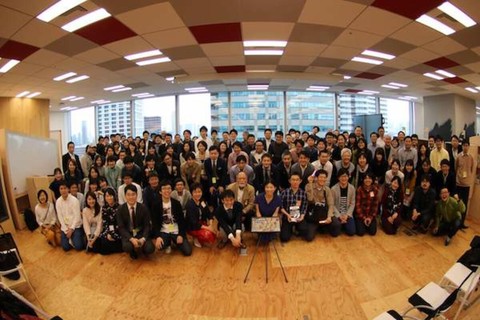
At these forums, speakers from Team 414 discussed emerging food technologies, alternative protein, and the burgeoning culture and global interest that was developing around cellular agriculture. Based on these exchanges, they submitted an internal policy advisory in April 2019 aimed at promoting cell-cultured meat and cellular agriculture innovation within MAFF.
The advisory’s goal was to create a better Japanese model for the development of cell-cultured meat, one in which the industry’s potential and opportunities would not be concentrated among a few, but instead openly shared with livestock farmers and other traditional agricultural interests. In order to ensure a sustainable future for cellular agriculture in Japan, they reasoned, the industry would need to take a less confrontational and more inclusive approach from the beginning, thus avoiding the tensions between its proponents and the traditional livestock industry advocates, as has been seen in the US and other countries. According to the officials from Team 414, much of the material on cellular agriculture in their policy advisory, including a potential model for integrating traditional farmers, was borrowed from the Shojinmeat Project’s open-access slides.
Though some members of Team 414 were concerned that older MAFF officials might not grasp the importance of the proposal, the fact it was submitted was nevertheless an important milestone — and it didn’t go unnoticed within MAFF.
In April 2020, MAFF established the “Food Tech Study Group” with members of Team 414 at its core. This was a collaborative, multidisciplinary, open forum intended to gather perspectives from food companies, research institutes, government agencies, and venture capital firms. There were no restrictions on who could participate and this was important to us because the key value of this study group was in getting everyone — including stakeholders from the world of conventional agriculture — on board, so that we could establish inclusive policies that respected all participants of all sectors.
Many members of the Shojinmeat Project joined this forum, and several were instrumental in leading its cell-ag discussions — one (who later became the GFI-APAC Japan delegate) introduced overseas regulatory systems, another posited how Muslims may view cell-cultured meat, while others led discussions on public communications and key technical hurdles. Additionally, many of the questions and topics that arose at these meetings were based on information from the Shojinmeat Project’s slideshow which had previously been shared with the group’s participants.
One of the study group’s key outputs was a Japanese-language interim report on strategies to leverage emerging food technologies that would contribute toward a more sustainable food economy and better Japanese food security. The study group was later reorganized into the “Food Tech Government Council” — exclusively for exploring and coordinating public sector collaboration — and the “Food Tech Public-Private Council” which is held privately in order to allow for the sharing of trade secrets and other sensitive information among its participants. As part of its regular monitoring of government and industry activity, the USDA’s Foreign Agricultural Service also reported on these developments.
In this way, our vision of a cell-ag revolution with no one left behind had begun to take shape within the government.
Establishment of JACA — the Japan Association for Cellular Agriculture
Technology is a double-edged sword and promoting innovation alone isn’t enough to ensure we actually reap its benefits. Instead, nonprofits like New Harvest and Shojinmeat Project advocate for how a cell-ag future should look by thinking several steps beyond simple feasibility.
This approach is also closely related to the concept of rulemaking. Rulemaking differs significantly from lobbying: While lobbyists may work on behalf of special interests or specific industries to achieve policy or regulatory goals, rulemaking takes a broader, more inclusive approach — one that concerns how things should be from a multi-stakeholder perspective, balancing interests from government, industry, academia, and nonprofits, to stage a society-wide harmonization process.
Perhaps the most noteworthy but underreported aspect of the Shojinmeat Project’s work has been its impact on rulemaking for cellular agriculture in Japan.
Shojinmeat Project slide on inclusive rulemaking for cellular agriculture. Source: Shojinmeat Project.
Thanks to Team 414 and the JST-Mirai Program, the momentum surrounding rulemaking for cellular agriculture was beginning to form inside the government, but we were still missing a nonprofit thinktank dedicated to cellular agriculture. Cellular Agriculture Institute of the Commons (CAIC) spun out from the Shojinmeat Project to fill this role. With this new entity, we now had sufficient private-sector, nonprofit, and government involvement to launch a formal rulemaking process aimed at creating and implementing cellular agriculture policies.
The Tama University Center for Rulemaking Strategies (CRS) is a think tank that brings together public, private, academic, and nonprofit-sector stakeholders to both formulate and implement new policies. After being contacted by a Shojinmeat Project member, CRS began organizing roundtable discussions on cellular agriculture. This multi-stakeholder roundtable became the Japan Association for Cellular Agriculture (JACA), and the Shojinmeat Project think-tank spinout — CAIC — was appointed to lead those discussions as its secretariat.
This formalization of the rulemaking process connects back to the Food Tech Study Group in which MAFF’s Team 414 was so instrumental. That group had since split into several subgroups to focus on specific topics such as plant-based proteins, insect-based proteins, space food, research funding, and cellular agriculture, among others. In September of 2020, JACA formally inherited the cellular agriculture subgroup, thereby becoming the official rulemaking body for cellular agriculture in Japan.
The upcoming agenda for JACA includes the assembly of a comprehensive policy recommendation, formation of a parliamentary alliance for cellular agriculture, and submission of the policy recommendation to government agencies and other policy makers under the auspices of the parliamentary alliance. These recommendations will cover broad topics to synchronize developments across a range of sectors, including food safety regulations, IP handling of starter cells, allocating of power and responsibility among agencies, recommendations on trade union scopes and policies, focus areas for academic studies, and recommended schemes for grants and subsidies.
So far, these developments have not attracted much media attention. But JACA has been steadily growing and attracting key international players such as GFI-APAC, BlueNalu, MosaMeat, Aleph Farms, and other global stakeholders, all of whom have taken part in its discussions. In this way, our citizen-science experiment has already borne more fruit than I ever could have expected. Our inclusive, no-one-left-behind vision for cellular agriculture can now be seen in Japan’s national policy, with a public-inclusive approach having become the default working model. We hope this will serve as inspiration for others aiming to achieve similar objectives.
Looking ahead, the Shojinmeat Project’s goal is to continue working to ensure cellular agriculture develops as a technology with accessible entry points for ordinary citizens and anyone else wanting to get involved — not just for corporations, elite investors, or other profit-seeking interests. How things should be is achievable, but only if we embrace and continuously work toward a truly open and inclusive development path for this new industry.
Additional notes and links:
DIY cell culture manuals (March 2020 versions):
DIY culture medium manual for DMEM and L15 DIY cell culture manual (& the roadmap to DIY cell-based meat)
In November 2019, Dr. Mark Post visited Japan to speak at a public science event organized by JST as a part of the JST-Mirai Program. For this event, high-school student members of the Shojinmeat Project demonstrated a DIY culture medium made from amino acid supplements, table salt, and other household materials. During Dr. Post’s keynote speech, he drank the DIY medium on stage.
Shojinmeat Project artwork gallery: (All images copyright Shojinmeat Project)
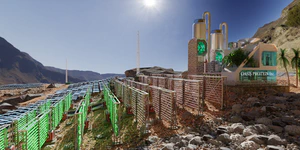 "Oasis Protein" desert food depot. Mid-scale closed-loop cellular agriculture facility that uses closed-tube algae photobioreactor - green algae for basal medium, red algae for media recycle.
"Oasis Protein" desert food depot. Mid-scale closed-loop cellular agriculture facility that uses closed-tube algae photobioreactor - green algae for basal medium, red algae for media recycle.
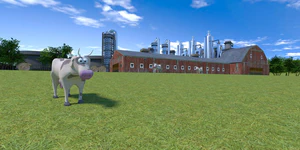 Cellular agriculture farmscape - there would be fewer cows while bioreactors are installed in the backyard.
Cellular agriculture farmscape - there would be fewer cows while bioreactors are installed in the backyard.
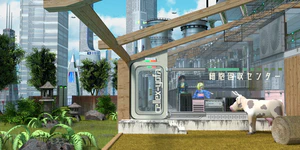 “CellEx YoFa” urban microfarm. A cell extraction facility housing only one cow operating as a farm at an urban center.
“CellEx YoFa” urban microfarm. A cell extraction facility housing only one cow operating as a farm at an urban center.
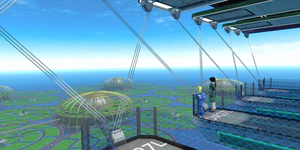 Ocean protein farming. Ocean floating biomass facility to produce basal medium.
Ocean protein farming. Ocean floating biomass facility to produce basal medium.
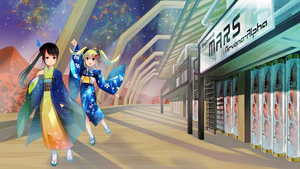 Shojinmeat Mars “Nirvana-Alpha.” Watch Miyo-san and Aco-chan tour a Martian cell-ag facility at https://www.youtube.com/watch?v=M-CK2V6jrfY&t=56s (VR headset recommended).
Shojinmeat Mars “Nirvana-Alpha.” Watch Miyo-san and Aco-chan tour a Martian cell-ag facility at https://www.youtube.com/watch?v=M-CK2V6jrfY&t=56s (VR headset recommended).
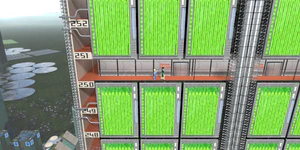 Vertical farm superskyscraper. Superskyscrapers with integrated cellular agriculture facilities may be a futuristic version of buildings with vines.
Vertical farm superskyscraper. Superskyscrapers with integrated cellular agriculture facilities may be a futuristic version of buildings with vines.
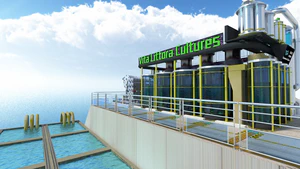 “Vita Littora Cultures” seafood factory. A small-scale seafood cellular agriculture facility with aquaculture ponds and proliferation tanks are operating at room temperature.
“Vita Littora Cultures” seafood factory. A small-scale seafood cellular agriculture facility with aquaculture ponds and proliferation tanks are operating at room temperature.
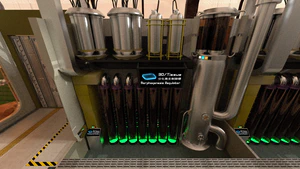 “Shojinmeat Nirvana-Alpha” 3D/tissue morphogenesis regulator unit facility that produces structured meat at a Martian cell-cultured meat factory - regulation of morphogenesis becomes key for whole tissue culture.
“Shojinmeat Nirvana-Alpha” 3D/tissue morphogenesis regulator unit facility that produces structured meat at a Martian cell-cultured meat factory - regulation of morphogenesis becomes key for whole tissue culture.
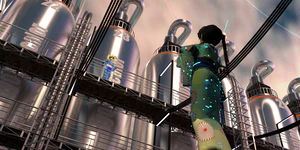 Large-scale meat brewery. Large-scale proliferation tanks may look like a beer brewery.
Large-scale meat brewery. Large-scale proliferation tanks may look like a beer brewery.
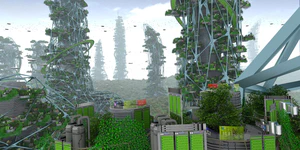 Solarpunk meets cellular agriculture. A Solarpunk scenery of distributed community-scale bio-manufacturing and cellular agriculture facilities on a tropical drone-oriented city.
Solarpunk meets cellular agriculture. A Solarpunk scenery of distributed community-scale bio-manufacturing and cellular agriculture facilities on a tropical drone-oriented city.
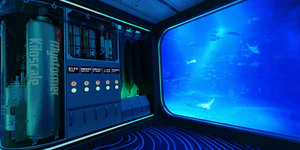 “Beef under sea” - An undersea room equipped with a whole tissue culture apparatus.
“Beef under sea” - An undersea room equipped with a whole tissue culture apparatus.
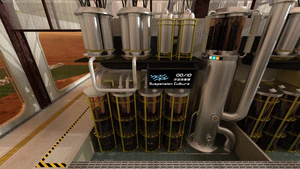 “Shojinmeat Nirvana-Alpha” suspension culture unit. Suspension culture units that produce unstructured meat.
“Shojinmeat Nirvana-Alpha” suspension culture unit. Suspension culture units that produce unstructured meat.
 “Vital Vector” comet mining & mass driver station. While asteroid mining does metals, comet mining does volatiles. Food, plastics and biomass can be shot to other parts of the solar system by a mass driver at the center.
“Vital Vector” comet mining & mass driver station. While asteroid mining does metals, comet mining does volatiles. Food, plastics and biomass can be shot to other parts of the solar system by a mass driver at the center.
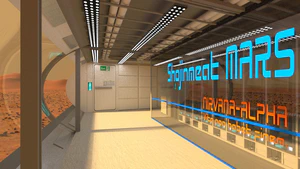 “Shojinmeat Mars” reception room. Reception room of a Martian cell-cultured meat factory.
“Shojinmeat Mars” reception room. Reception room of a Martian cell-cultured meat factory.
 “Aco-chan’s school trip souvenir” - A visual novel game snapshot with a cell-ag reference.
“Aco-chan’s school trip souvenir” - A visual novel game snapshot with a cell-ag reference.
